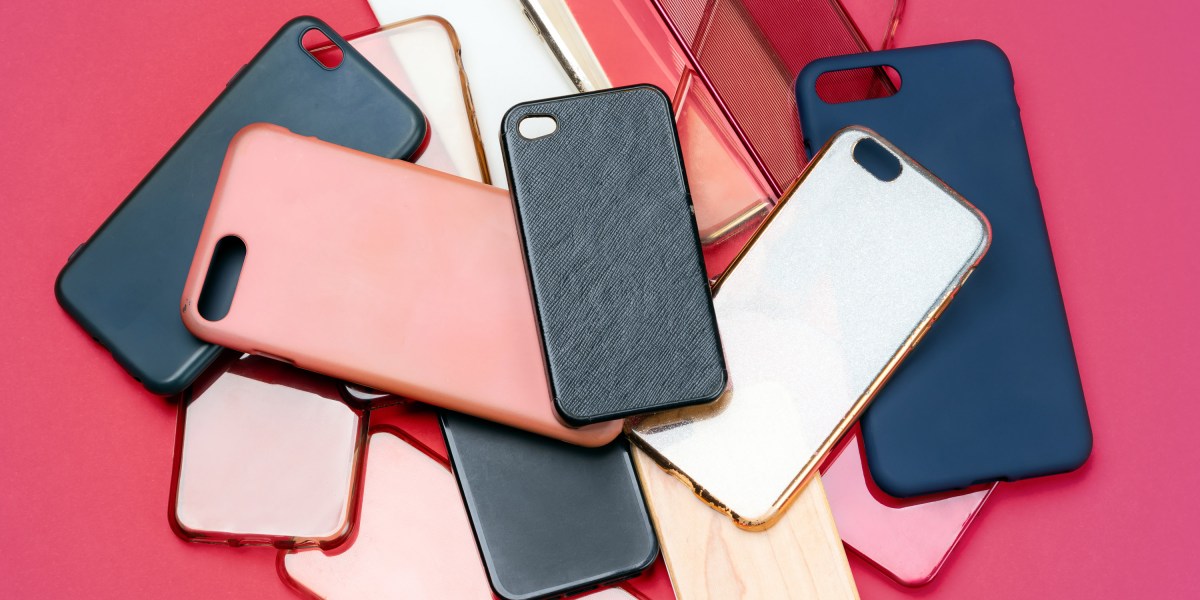Why my bittersweet relationship with Shein had to end
China Report is MIT Technology Review’s newsletter about technology developments in China. Sign up to receive it in your inbox every Tuesday.
I’m a lot like everyone else these days, doing a bit of self-reflection at the beginning of the year. I’m a tech reporter, but I also use tech platforms for my personal life. And throughout the last year, I’ve been really considering my bittersweet personal relationship with … online shopping.
To be honest, I’ve been missing the online shopping experience in China since I moved to the US four years ago. I grew up in China at the same time that Taobao, a popular e-commerce platform, inserted itself into the center of everyday life. Whatever common, luxury, niche, or handmade products you wanted, you could always find them online on Taobao, and at a cheaper price than in brick-and-mortar stores. It really is the place of abundance.
So when I noticed Shein becoming mainstream in the US over the past few years, I thought, Great! I finally have a Taobao replacement! But somewhere along the way, I started questioning why I enjoy this particular kind of shopping experience, and also what it means for an e-commerce platform to be offering endless deals.
In the summer before I moved, in 2018, I made a purchase on Taobao: five phone cases. I bought them precisely because I heard that small things like phone cases were much more expensive on the other side of the Pacific.
I was not wrong. I paid roughly $15 total, and that included shipping from four different sellers. If I got them in the US, I could easily spend $50, if not more, for the same.
After that, it was difficult for me to say goodbye to Taobao. (There is an international version called AliExpress, but it’s much harder to use.) The next year, I even asked a friend traveling from China to use her precious luggage space to bring me five more phone cases, also from Taobao. But I had to accept the new reality of online shopping in the US: Things are more expensive, there are not as many options, and it takes longer to ship everything.
Taobao is just one of the handful of creations from Chinese e-commerce giants like Alibaba, JD, and Pinduoduo that learned to combine the country’s traditional advantage of low manufacturing and transportation costs with the fast pace of tech innovations in mobile payment, recommendation algorithms, and targeted marketing. As a result, e-commerce has become a multi-trillion-dollar market led by China, and one of the few tech industries in the world in which China has been spearheading innovations. For years, people have been asking whether the US will ever catch up.
Then Shein entered the public’s attention and changed things again. Founded in China in 2008, Shein has become incredibly popular far beyond the country’s borders, with a valuation of about $100 billion. Young people on almost all continents are inspired by TikTok and YouTube influencers doing “Shein hauls”—buying dozens of clothes and other items in one go and dumping everything onto the bed before trying them on for the camera, one by one. The sheer contrast between the tall pile of clothes and the low total price tag makes for a great social media spectacle.
For me, the selling point came when a friend here, also from China, told me: “It feels just like Taobao.” I was sold.
I went on my first Shein journey in August 2021. And guess what I bought?
Yeah, phone cases.
I bought six phone cases and one wireless-earbud case for a combined price of $12.50—taxes and shipping included. They were fun and brightly colored, and the quality was not bad. When I unpacked them all, I told myself I had finally found a way to replicate my cheap shopping experience here, thanks to a Chinese company that wants to expand to the world.
I suspect for many recent Chinese immigrants like me, shopping on Shein is like microdosing Taobao or the Chinese e-commerce system more broadly. To be fair, there are still differences: Shein is known for clothing and home goods, while Taobao’s products are more varied. But whenever I’m on Shein, suddenly I feel surrounded by the familiar—both because of the price points and because there are dozens of pages of products that I can never get to the bottom of. I bought phone cases that I wasn’t even that into, because maybe it had the steepest discount or was the most sold—and hey, it was just $2. Maybe, I thought, I’d actually like it when I held it in my hand.
But after a while, as the not-so-contradictory feelings of novelty and nostalgia wore off, I stopped looking for deals on Shein. I began to realize that I actually didn’t think about switching out phone cases all that frequently. I started to ask myself: Did I really need that many phone cases?! Or was I just lured by the low price and the nice feeling of having infinite options?
I made another Shein purchase precisely a year after my first. (I guess something about August really brings out my shopping urge.) This time, I ventured to new fields and bought a plate storage rack ($3), a trendy (at the time) turkey hat for my cat ($4.50), a sink drain filter ($2), and more. I paid $44 for 14 items in the end, just enough to qualify for free shipping and a 15% discount.
When I went to look up the order this week, I discovered I’d already forgotten the majority of the items. The sink filter turns out not to fit my sink at all. The turkey hat can’t stay on my cat. The plastic plate rack is too flimsy. But given they only cost a few bucks each, I never thought of returning them either. They will probably stay in my storage until the day I move and then hit the trash bins.
(To be fair, there are Shein purchases that I’ve really enjoyed. Like a $2 nylon watch band that feels better than my original Apple Watch band or the much more expensive ones I got from Target. I also think people should be able to choose quantity and price over quality, because the idea of demanding that people only buy premium products also feels unrealistic and patronizing.)
As it turns out, I’ve finally started to see through the illusion of Shein-like platforms: to get these occasional incredible deals, you are also encouraged to shop much more than is necessary or even reasonable. This illusion has worked for a long time and for a lot of people—including me!—but it’s become harder and harder to ignore the environmental consequences of my purchases, and the ways in which platforms trick people into buying more and more.
And I don’t think I’m the only one experiencing that awakening. Broadly speaking, I think society is slowly but surely shifting toward recognizing the climate impact of mass-produced cheap goods (and, maybe even more slowly, the related costs of cheap human labor). While these conversations have yet to happen as widely and furiously in China, companies like Taobao and Shein will inevitably have to answer the question of whether their business model is sustainable for everyone—or only for themselves. The Chinese e-commerce industry, which had grown at spectacular speed for a decade, now needs to contend with bubbling public pressure regarding the environment and the economic pressure of a recession on the horizon. So where are they heading from here? There’s certainly a lot of soul-searching for the industry to do.
And I’m doing some soul-searching of my own.
I haven’t shopped on Shein since August, and I also haven’t tried out Temu, a recent competitor platform, also from China, that works in basically the same way and is gaining steam. (I wrote about it back in October, if you’re curious.) One of my New Year’s resolutions is to not fall for the consumerism trap and to stop buying things just because they are cheap and accessible.
Still, I have more than 10 phone cases with zero use to me piling up in my desk drawer, collecting dust.
The other day, in my local Buy Nothing group on Facebook, a neighbor asked if anyone had a spare phone case; I quickly commented yes. When she came to pick it up, I brought out the five or six in my possession that looked the most presentable.
She said, “Oh, I only need one.”
I said, “Please take them all. I really mean it. I have way too many at home.”
What has your Shein shopping experience been like? Tell me more at [email protected].
Catch up with China
1. As Chinese bitcoin miners fled the country’s crackdowns in 2021, many migrated their operations to Kazakhstan in search of cheap energy and loose regulation. But more than a year later, the boom is over, and miners have largely moved on yet again—some back to China. (MIT Technology Review)
2. France’s data protection authority fined TikTok €5 million for making it difficult to refuse cookies. The company also faces two other ongoing privacy investigations from the EU. (Politico)
3. China’s population growth reached a pivotal moment: It dropped for the first time in six decades. (CNN)
4. One more covid treatment option, Merck’s molnupiravir, could be available on the Chinese market by the end of this week. (South China Morning Post $)
- Hopefully it will reduce the supply shortage of covid treatments that has enabled scammers to take advantage of desperate individuals in China—a trend I wrote about in last week’s newsletter. (MIT Technology Review)
5. Over a month after the Chinese protests against zero-covid policies, the police are secretly arresting those who participated. (NPR)
6. Satellite images show vehicles and people lined up in front of funeral homes in China, contradicting the state narrative about low covid casualties. (Washington Post)
7. The tech industry in Taiwan is betting on cryptocurrencies to bring cybersecurity and empowerment to the island. (Rest of World)
8. Beijing could allow DiDi—the ride-hailing app that fell out with state authorities after it insisted on listing in New York—to return to domestic app stores this week, as the state warms up to tech platforms. (Reuters $)
9. The US House of Representatives voted overwhelmingly to set up a committee focusing on economic and military competition with China. (Politico)
Lost in translation
Have you ever thought about how Chinese companies come up with their English names? A new article in Chinese publication Pingwest explores how translation is an art, and not every company does it right. Some of them do the bare minimum by using the standard pinyin romanization in Mandarin, like Huawei, but then people with other native languages end up pronouncing it very differently. (The correct way to say it is hwa-way.) Many others have followed the Chinese requirement that company names start with the name of the city or province where it’s incorporated, though that is not common anywhere else. Other companies have recognized that the romanization would be hard to pronounce and turned to acronyms, like DJI, the drone company, which stands for Da Jiang Innovation.
The best names usually don’t stay literal to their Chinese counterparts but adapt them for easier pronunciation and better association across different cultures. The perfect example needs no explanation: TikTok.
One more thing
If I had an army of Twitter spam accounts at my disposal, I definitely wouldn’t use them for this. Hong Kong–based journalist Timothy McLaughlin spotted a large number of bot accounts that swarmed a tweet by Disneyland to say the coming festival celebrated in many Asian countries should be called “Chinese New Year” and not “Lunar New Year.” We don’t know who deployed these bots. But personally, I think you can call it whatever you are familiar with! I’d never waste my spam army on such a petty argument.




